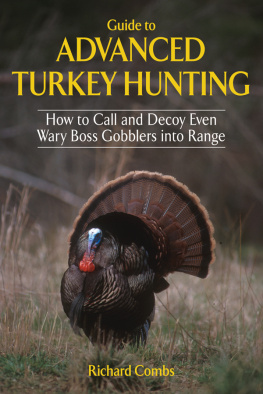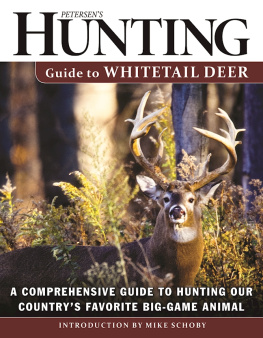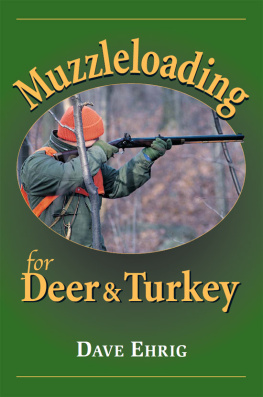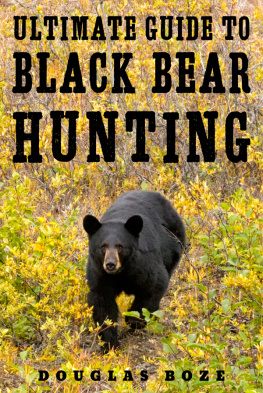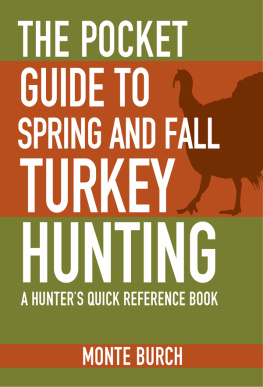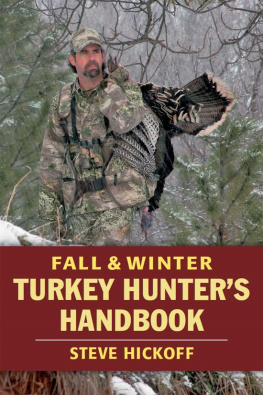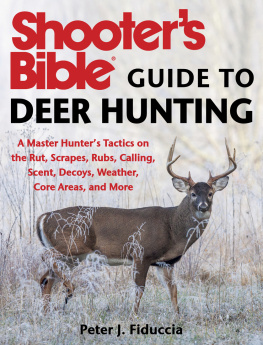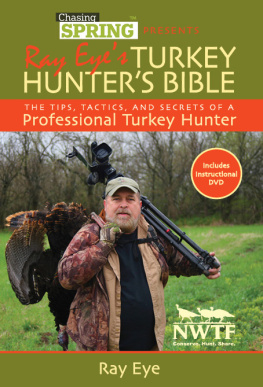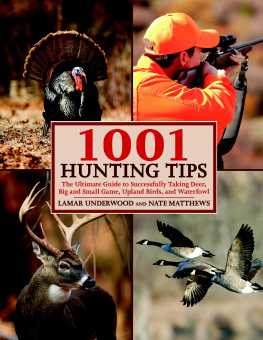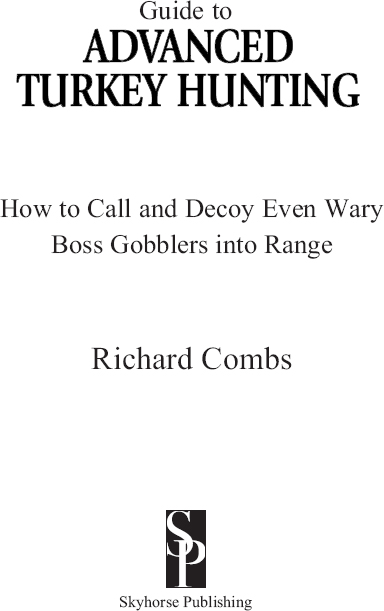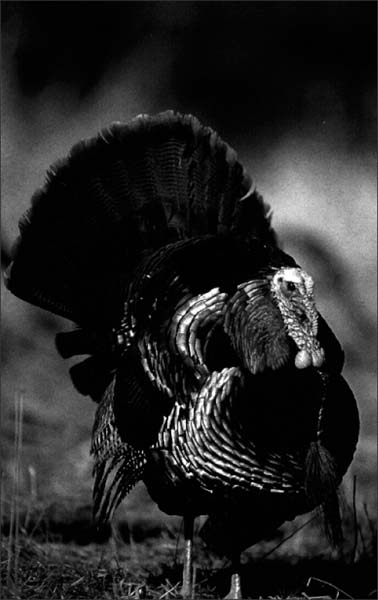
In Memoriam, Alec Combs, 1911-1987.
We'll not soon see another like him.
Copyright 2012 by Richard Combs
All Rights Reserved. No part of this book may be reproduced in any manner without the express written consent of the publisher, except in the case of brief excerpts in critical reviews or articles. All inquiries should be addressed to Skyhorse Publishing, 307 West 36th Street, 11th Floor, New York, NY 10018.
Skyhorse Publishing books may be purchased in bulk at special discounts for sales promotion, corporate gifts, fund-raising, or educational purposes. Special editions can also be created to specifications. For details, contact the Special Sales Department, Skyhorse Publishing, 307 West 36th Street, 11th Floor, New York, NY 10018 or info@skyhorsepublishing.com .
Skyhorse and Skyhorse Publishing are registered trademarks of Skyhorse Publishing, Inc., a Delaware corporation.
Visit our website at www.skyhorsepublishing.com .
10 9 8 7 6 5 4 3 2 1
Library of Congress Cataloging-in-Publication Data is available on file.
ISBN: 978-1-61608-578-0
Printed in the United States of America
Front and back cover and page ii photos by John Trout Jr. Photo on page 21 by South Dakota Tourism/Chad Coppess. Photos on pages 122 and 149 by South Dakota Tourism/Mark Kayser. All other photos by author unless otherwise indicated.
TABLE OF CONTENTS
Acknowledgments
Friends always help in the production of a book, and it would be impossible to list all those who in some way contributed to this one. I owe a special thanks to the following:
Jean Findley, for her insightful editorial advice.
Steve Gillen, for his counsel and encouragement.
Tom Cross, who is at least partly to blame for my obsession with this wonderful sport.
John Gilmore, for sharing his wonkish knowledge of what happens when a shot charge is sent down a barrel, and all the things that can go wrong between pulling the trigger and hitting the target.
Jay Cassell, for being in the right place at the right time.
Peter and Kate Fiduccia, for believing in this project.
And, for sharing their knowledge, their experience, and in some cases their hunting spots:
Larry Norton of Bent Creek Lodge in Jachin, Alabama
Jimmy McDaniel of Big Cypress Hunting Adventures Jay Novacek
Joe Artimer
Tim Hooey
Tim Hart
Paul Meeks
Hank Strong
And last but far from least, my wife Claire, whose patience, support, and encouragement have made it possible for me to pursue a life most outdoorsmen can only dream of.
Foreword
Near the end of my fourth season of turkey hunting, on a glorious spring morning, I sat glassing a huge meadow atop a hill in southeastern Ohio. Dogwoods and redbuds bordered the meadow, over which flowed shadows of billowy cumulus clouds, and the new grass rippled in a soft breeze. All my attention, though, was on two gobblers, a jake, and two hens in a corner of the field. The gobblers were putting on a show, pausing from their strutting now and then to chase the jake whenever he got close to the hens.
For most of that season I had watched gobblers strutting in that meadow, almost always in the company of hens. Sometimes they gobbled in response to my calls, but with one exception they never moved in my direction. The exception was a gobbler that began moving my way from several hundred yards out, only to be intercepted by a hen when he had cut the distance in half.
In the three previous years I had hunted turkeys, I had filled my tag only once. I had read every book and magazine article about turkey hunting I could get my hands on. I had watched dozens of videos, and practiced my calling religiously with the aid of several good audio tapes. I had talked turkey hunting strategies endlessly with my more experienced friends. This was my last chance to get out that season, and I had tried every trick I had read or heard about.
At a glance, the meadow I was glassing appeared to be flat. As the turkeys moved across the field, though, it became apparent that there was a slight rise in the terrainjust enough that if the birds continued in the same direction, they would be out of sight over that rise, about 100 yards away. I waited until I could no longer see them, and began crawling across the meadow on a path to intercept them, pausing at the edge of the field to shuck my fanny pack. My binoculars were dragging, so I shucked them, too. Then my canteen started gurgling, so I unbuckled that and left it behind as well. Ten yards later, my owl hooter was digging into my leg, so I pulled it out of my pocket and dropped it. My pruning shears were next to go. Eventually I was halfway across the field, still on my belly, with enough hunting gear strewn behind me to open a sporting-goods store. Every five or ten yards, I stopped to yelp quietly a few times on my diaphragm call.
Finally, I could hear the big birds clucking and purring continuously, not twenty yards away. I clucked and purred back. After what seemed like a long time, I could see the tops of two tails fanned out, moving toward me slowly like sails coming over the horizon. They stopped, turning this way and that, and gradually sank below my line of sight. I clucked and purred again, a little louder, and they moved my way again. They never gobbled, but I could hear them drumming. Part of a tail rose over the horizon again, then all of it, then a head.
My safe was off, my finger was on the trigger, and I worked to control my breathing. Still, I couldn't see quite enough of the gobbler's head to risk a shot through the grass. I waited. The gobbler dropped into a half-strut, raising his head a little. I clucked, the head came up a few inches higher, and I pulled the trigger.
Click. In a lifetime of hunting upland game, I had encountered at most two or three dud shotshells. Now, at the worst possible time, I had found another. I yanked back on the stock of the pump to chamber another shell and scrambled to my feet, with predictable results. The birds scattered. One flew off in the opposite direction, several others ran for cover. One of the gobblers, though, opted to bank around and fly for the closest line of trees, which happened to be behind me. It was a memorable sightthat big gobbler, beard swinging, red-white-and-blue head against the sky, flying by not thirty yards away. I shouldered my gun, swung, pulled the trigger, and was on the bird within seconds after he thumped the ground.
That moment was a turning point for me as a turkey hunter. Some hunters might argue that I had bushwhacked the bird, the implication being that I had taken him in an unsporting or even unethical manner. Their feeling is that the only proper way to shoot a turkey is to sit against a tree, call him into range, and shoot him on the ground.
I respect their opinions, but I disagree. I had put a lot of time into locating those birds; it was no accident I was in that spot at the right moment. I had used stalking skills I had gained in a lifetime of pursuing other species, and relied on my best hunter's instincts to get the birds within range. I had acted quickly when the situation required it, and turned bad luck into good luck.
The turkey that is brought in gobbling and double-gobbling, strutting, drumming, and pirouetting, epitomizes the classic turkey hunting scenario we turkey hunters live for. Truth be told, these are usually the easy gobblers.
At some point the persistent turkey hunter will began to take birds he would never have takenprobably would not even have seena few years before. They might be old gobblers that sneak in slowly and silently, requiring extreme patience. They might be subordinate toms that dash in from an unexpected direction in hopes of stealing a hen from the boss. They might be gobblers that strut and drum but seldom gobble. They might even be heavily pressured toms that have learned to move away from any kind of calling, and can only be taken by the hunter patient and woods-wise enough to bushwhack them as they walk down a familiar ridgeline or logging road.
Next page
